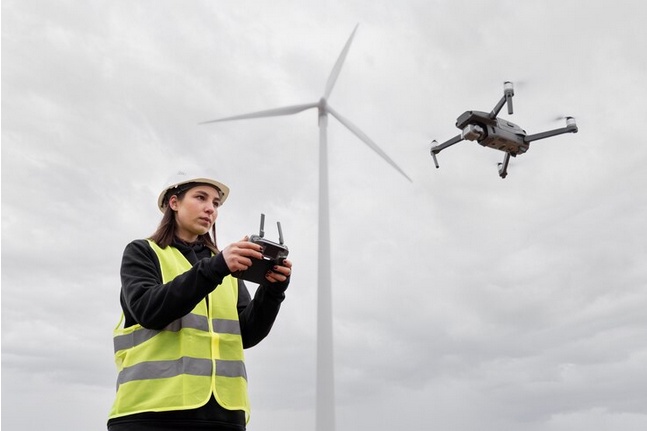Introduction
In recent years, the rise of drone technology has revolutionized various industries, including photography. Commercial drone photography has gained immense popularity due to its ability to capture stunning aerial perspectives previously inaccessible to traditional photographers. From real estate to agriculture, construction to filmmaking, drones have become indispensable tools for capturing unique and captivating images and videos. In this article, we will delve into the art of commercial drone photography, exploring its techniques, applications, and the impact it has had on various industries.
The Evolution of Drone Photography
The concept of aerial photography is not new, but drones have democratized it by making it more accessible and affordable. Previously, aerial shots were captured using helicopters or airplanes, which were expensive and often logistically challenging. With the advent of drones, photographers can now capture breathtaking aerial views with ease and at a fraction of the cost.
Techniques and Equipment
Commercial drone photography requires a combination of technical skill and creativity. Piloting a drone effectively requires practice and understanding of flight dynamics. Additionally, photographers must familiarize themselves with the various camera settings and shooting modes to capture the best possible images.
Choosing the right equipment is also crucial. High-quality drones equipped with advanced cameras and stabilization technology ensure sharp and stable footage. Additionally, accessories such as ND filters and extra batteries are essential for prolonged shooting sessions.
Applications in Various Industries
Commercial drone photography has diverse applications across various industries:
-
Real Estate: Drones are extensively used to capture aerial views of properties for sale. These aerial shots provide potential buyers with a comprehensive view of the property and its surroundings, enhancing marketing efforts and attracting more inquiries.
-
Construction: Drones play a vital role in monitoring construction sites, providing project managers with aerial footage for progress tracking, site surveying, and identifying potential safety hazards. This improves efficiency and safety in the construction industry.
-
Agriculture: In agriculture, drones equipped with specialized sensors and cameras are used for crop monitoring, field analysis, and irrigation management. These aerial insights enable farmers to make data-driven decisions, leading to improved crop yield and resource utilization.
-
Filmmaking and Media: Drones have transformed the way films and media productions are made. They allow filmmakers to capture dynamic aerial shots that were previously only possible with expensive equipment such as cranes or helicopters. This has opened up new creative possibilities in storytelling and cinematography.
Challenges and Considerations
While commercial drone photography offers numerous benefits, it also comes with its own set of challenges and considerations:
-
Regulatory Compliance: Drone operators must comply with regulations set forth by aviation authorities to ensure safe and legal operation. This includes obtaining the necessary licenses and permits, adhering to airspace restrictions, and following safety protocols.
-
Weather Conditions: Weather can significantly impact drone operations. High winds, rain, and extreme temperatures can affect flight stability and compromise image quality. It's essential for photographers to monitor weather forecasts and plan their shoots accordingly.
-
Battery Life and Range: Limited battery life and range are inherent limitations of drone technology. Photographers must carefully plan their flights and carry sufficient spare batteries to avoid interruptions during shoots.
-
Privacy Concerns: Aerial photography raises privacy concerns, especially when capturing images of residential areas or individuals without consent. It's crucial for photographers to respect privacy laws and obtain permission when necessary.
Conclusion
Commercial drone photography has emerged as a powerful tool for capturing captivating aerial perspectives across various industries. From real estate marketing to construction monitoring, agriculture management to filmmaking, drones have revolutionized the way we capture and perceive the world around us. However, successful drone photography requires a combination of technical skill, creativity, and adherence to regulations and ethical considerations. As technology continues to advance, the possibilities for commercial drone photography are limitless, promising even more stunning and innovative aerial imagery in the future.


No comments yet